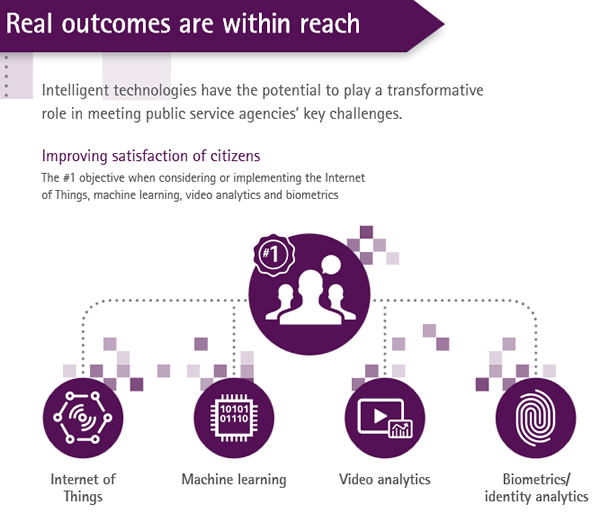Governments and government agencies across the globe are digitally transforming and in many cases still digitizing. On top of trying to tackle a range of challenges and aiming to offer new services, many government transformation initiatives seek to enhance citizen satisfaction and citizen experience.
Just as customer-centricity and customer experience are essential in all sectors, for some sectors we indeed came up with names to describe experiences of people in their various capacities. Citizen experience in government, patient experience and patient-centricity in healthcare, the list goes on.
Government and public service agencies are also increasingly using “newer” technologies across various tasks, functions and levels to optimize that citizen satisfaction, save costs, simply function better and, if possible, innovate and come up with new ‘business’ (or governement) models and, obviously, new sources of revenues.
Among these emerging technologies is the Internet of Things (IoT).
Industrial Internet of Things or IIoT deployments are taking place in many local government or public service agency situations, for instance with smart city projects. But also regional and national governments, as well as public sector agencies develop Industrial Internet of Things projects, for instance in healthcare and energy (smart grids).
Citizen satisfaction is key when planning or deploying the Internet of Things in public services
According to research by Accenture, increasing citizen satisfaction is the first objective when governments and public service agencies consider to deploy or effectively do deploy initiatives in the space of the Internet of Things and other emerging technologies; being machine learning, video analytics and biometrics.
The research report, entitled “Emerging Technologies in Public Service” and announced on November 15th, 2016, set out to see which emerging technologies are being adopted across public sector and government agencies who have the most direct interaction with citizens or have the biggest responsibility with regards to citizen-facing services. Examples are health and social services, pension and social security, policing and justice; and administration, to name a few.
The report found that, across the several countries where the survey was held, mainly advanced analytics and predictive modeling are being implemented or piloted. It doesn’t specifically goes into detail regarding the usage of the Internet of Things as a separate category but as part of various goals and solutions in the context of applications with regards to, for instance, intelligent process automation, enhancing citizen experience and so on.
The Internet of Things in a citizen satisfaction context: many use cases
The Internet of Things can be used for so many applications in the citizen satisfaction context and of course is often part of broader projects.
It also depends on the region, the nature and tasks of the public sector agency, etc. In healthcare alone, the Internet of Things can be deployed in many ways. From safety and protection (fire brigades, emergency services) to public transport, waste management/collection and better mobility; the list of possibilities where the Internet of Things can help is almost endless.
Obviously there are also many challenges to tackle when looking to implement one or more of the mentioned technologies. Most of them are known: legacy IT, skillset and workforce challenges, lack of leadership, the list goes on.
You can read more in the press release, check out the report page (where you can read the results) and view the infographic made at the occasion of the report. Below is an extract of that infographic, showing that when considering to implement Internet of Things applications or any of the other mentioned technologies, citizen satisfaction enhancement ranks as a first priority.

Top image: Shutterstock – Copyright: Aleksey Stemmer – All other images are the property of their respective mentioned owners.


